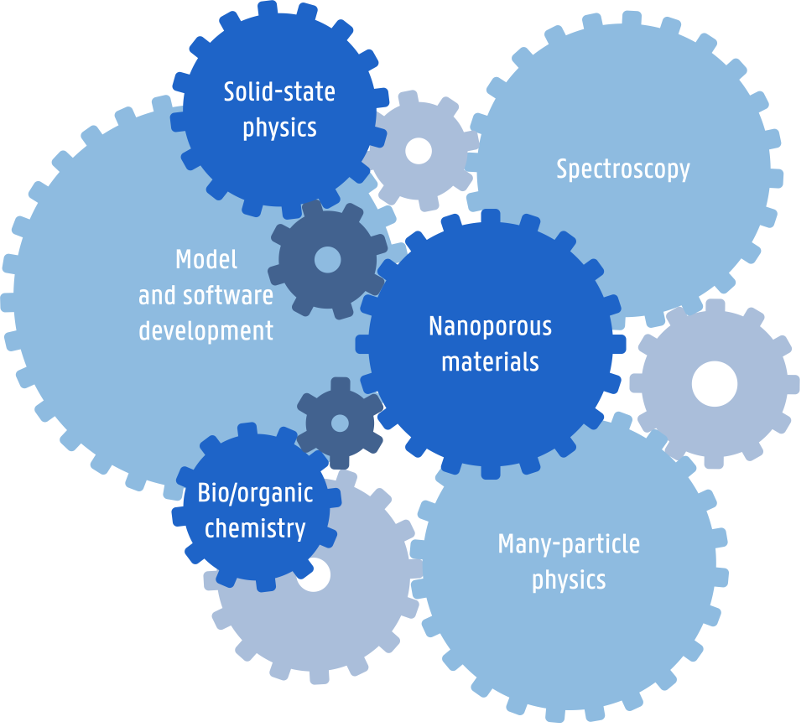The Center for Molecular Modeling is a multidisciplinary research center that focuses on frontier research in six major areas: chemical kinetics in nanoporous materials, computational material research on the nanoscale, spectroscopy, many-particle physics, model development and bio- and organic chemistry. The basis of the success of the CMM lies in the interdisciplinary composition of the research team which consists of chemists, chemical engineers, physicists, physical engineers and bio engineers. Since its founding in 2000 it has acquired a prominent position in previous research fields.
The six areas define the core-business of the main activities, and research in each of them is performed within the frame of a strong network with partners at Ghent University, in Flanders and at an international level. There is a strong synergy between the various research cells, stimulating interdisciplinary research. In addition the presence of physicists, chemists and engineers in the same Center is an ideal mixture to interchange ideas and to give mutual support. As the Center is composed of a theoretical and computational division, new model developments are regularly proposed which are applied in the various more application driven areas and which allows to go beyond state of the art. It is precisely this multidisciplinary character of the CMM, which is key towards excellence.
In some areas the CMM has acquired a prominent position with papers published in top journals such as Angewandte Chemie, Journal of the American Chemical Society (JACS), Physical Review Letters, etc. The research is performed using available program packages (Gaussian, ADF, MOLPRO, CHARMM, CPMD, CP2K, Orca, VASP,…) but the research goes beyond the usage of available programs. A series of own software packages have been developed in the past years such as TAMKin, MDTracks, ZEOBUILDER, among others. They are made available to the scientific community via open access, and the entire CMM library of software is consultable on http://molmod.ugent.be/software. In addition some new models have been implemented in standard codes (MBH in ADF, hyperfine- and g-tensor in CPMD, CP2K, ….) Available computer facilities moreover include the HPC infrastructure of the UGent.

